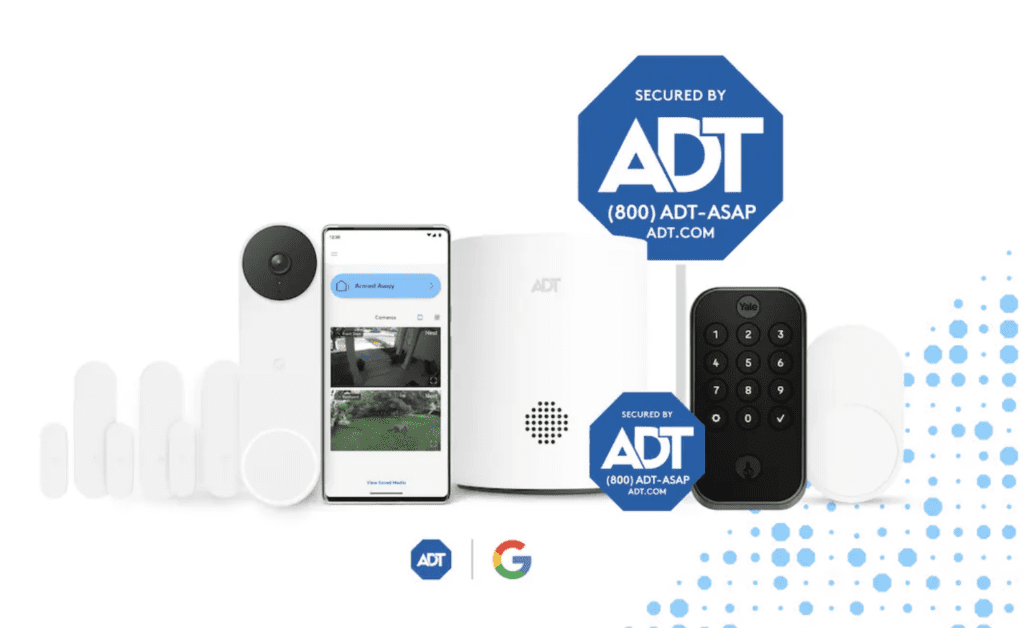
Our Marketer on Fire this month, DeLu Jackson, Executive Vice President and Chief Marketing Officer at ADT, recently took us through the 150-year-old company’s latest marketing transformation, which involved creating technological innovations, new media allocation, communications and a new go-to-market strategy. Here’s part two of our conversation with the marketing chief, which delves deeper into customer experience, demand planning, consumer insights, digital attribution and DEI strategy at the brand.
CM: Your website is very user friendly. What is your customer experience strategy there?

DeLu Jackson, Executive Vice President and Chief Marketing Officer at ADT: We focus there on moving from an information site that passes you to phone or field to being a frictionless commerce opportunity so that you can get quickly to transaction. Our goal was, if you’re a confident consumer, could you purchase in three clicks or less? And get in there, find what I need, get the cart and check out as quickly as possible. With a complex and emotional purchase, that is not an easy experience to create… They test it a lot on our different audiences and our different points of entry to make it simple for as many consumers as possible to leave with a very competent purchase.
CM: How do you gather consumer insights to inform your marketing strategy?
DJ: We start with demand planning, just understanding the category and behaviors–where are they searching, what are they looking for? What are they choosing to purchase to meet their security needs? We do high-level there. We obviously do lots of site research on how people navigate our site, where they start, where they end, what questions they have, who calls, who goes to the field. Then we work with our teams in our contact centers and our advisors to get feedback on what people call for, where do they start, how much research have they done when they get to us, so that we can simplify the experience for those consumers. So, we start with wherever they are in the process—not the overall process. So we’re connecting all the way from lead gen to online activity to phone, and even passing that to field and customer experience, so we can connect that experience through the process.
As you can imagine, some customers come in and they’re in and they’re out. They know what they want, they feel great, and they’re gone. A number of customers still have a lot of questions. They want to make sure that they’re making a very good decision here. So our goal is to make that as seamless and easy as possible across the organization. And because so much of it starts here, with what they initially see and call about or contact us about, we want that flow to be as seamless as possible.
CM: How is ADT dealing with the changes in digital attribution right now with cookies going away?
DJ: We have a combined team that does everything from advanced analytics and demand planning all the way through to measuring the customers at the installation level—not at media attribution or sale, actually at installation. We can see the whole process through. And the team’s done a great job of at understanding the impact of media and our different investments over time. As you can imagine, at any time period we have discreet variables. We invest more here or less here. We still have things like direct mail and online, and we can see how those different channels operate independently but also as a collective body of work. That really helps us because it operates at the customer or household level rather than just at the media attribution or channel level. That gives us a great body of data to test, learn, and navigate to make adjustments. And we get it in real time. Our team works in agile, so we actually discuss it every day. We’re making dynamic changes very consistently to our media mix, our investment strategy, even our content.
CM: You’ve shifted from marketing for CPG brands to working with a brand like a ADT. What did you take from your previous roles that you use today?
DJ: I’ve had a magical career journey across the customer basket of goods–everything from consulting and banking and financial services to automotive, and then QSR restaurants. And I always say: It’s the same consumer… Moving on to security, I’ve been fortunate to learn a lot about consumer behavior across these different categories to understand what it is people want to protect and connect. It includes vehicles and things that they purchase. Those purchases fit the size of their homes and the neighborhoods and the geographies they live in. It tells us a lot about what those needs and circumstances are.
CM: Moving on to DEI initiatives. Where has the brand shown success and how are you measuring it?
DJ: The team does a great job with that and understanding the impact, particularly in the marketing and in sales area, we focused on something. We partnered with one of our leading agencies called the Inclusion Experience. It’s a consistent process we use to make it our every day. So, representation our every day. If you see our creative, you’ll see it in our every work, that we believe everyone deserves to feel safe. In segmented or targeted circumstances, you’ll see people of many different situations and understanding what safety means for them.
It’s been really exciting to see our team go to market with that literally every day—the mosaic of our work in all the different situations, from health to renters to different communities to veterans. We want to demonstrate that safety is important for everyone, and that’s powerful for a brand that has this type of presence and this type of longevity. You talk about innovation and how we win for the next 150 years. It’s recognizing as those needs evolve, that we are right there and we have solutions that take care of that.
CM: Lastly, what are the main marketing challenges for the company in your particular vertical? And how are you addressing them?
DJ: Our 150 years of success has created a ton of opportunity for lots of other solutions we’ve seen, and other brands into the space, new solutions and ways to meet some of consumer needs for safety and security. So it’s one, continuing to innovate to remain category leading after so many years. And then communicating the evolution as we bring all these great new solutions to market in so many new segments, having all these different questions or needs. It’s making sure that we can efficiently keep that in front of the consumers and let them know we have the things that keep us relevant and again, leading in the space. Obviously we want to do that efficiently and in the right channels. And that evolves daily, so keeping pace with that in a world gone digital is the challenge.
CM: Do younger consumers perceive security differently than older generations?
DJ: What we see is the role of technology in providing that is way more prevalent in the next generation of homeowners, and even renters, as they move into the category. Fifteen years ago, the iPhone and apps became everyday accessories and now provide information and access that we didn’t have before. That wasn’t that long ago. So, it’s integrating that and bringing that forth, which you’ll see in our products and services, and letting everyone know that those are part of the evolution of what it means to have information and access when it comes to security and safety. Also, mobility [is important]. We have a mobile product called Social Secure. Continuing to be relevant is really important. It’s life stage as much as it is generational. They go through life stages where those things become more and more important, and next generations are moving into those life stages. And we’ll be there.
The post ADT Marketing Part 2: EVP & CMO DeLu Jackson on Customer Experience, Insights and Attribution appeared first on Chief Marketer.